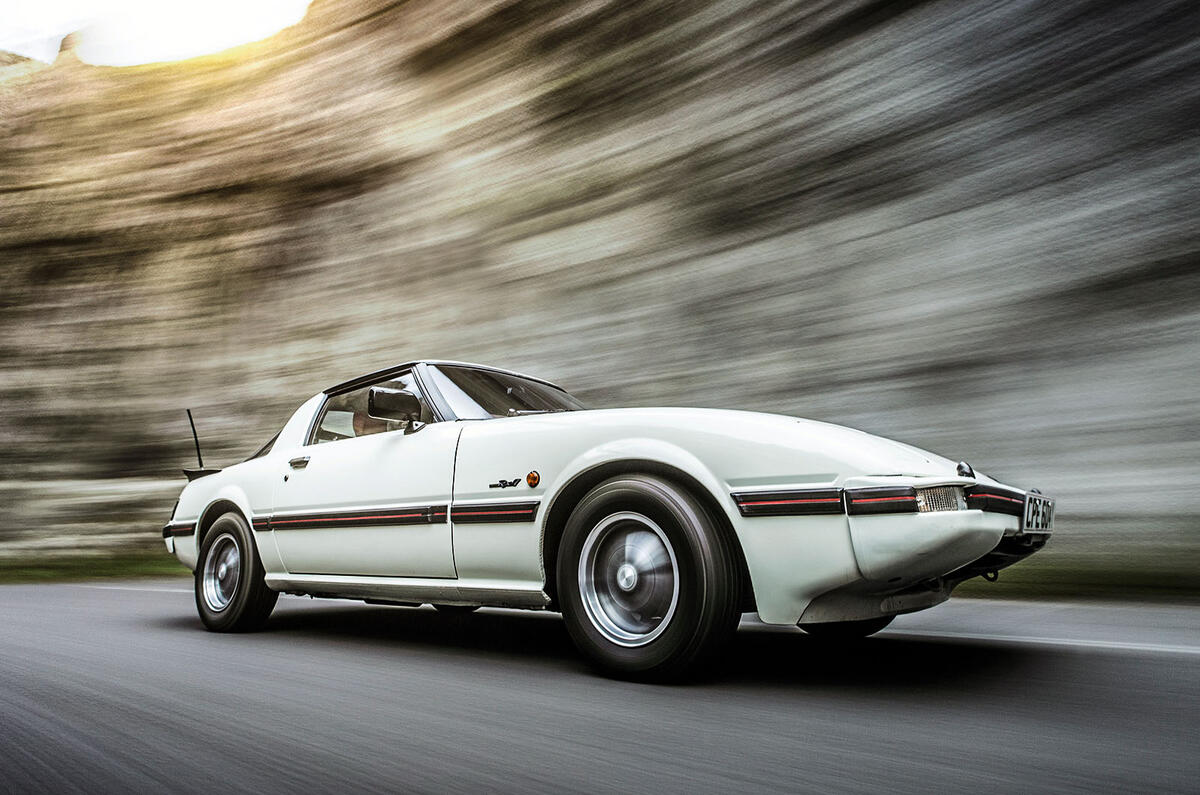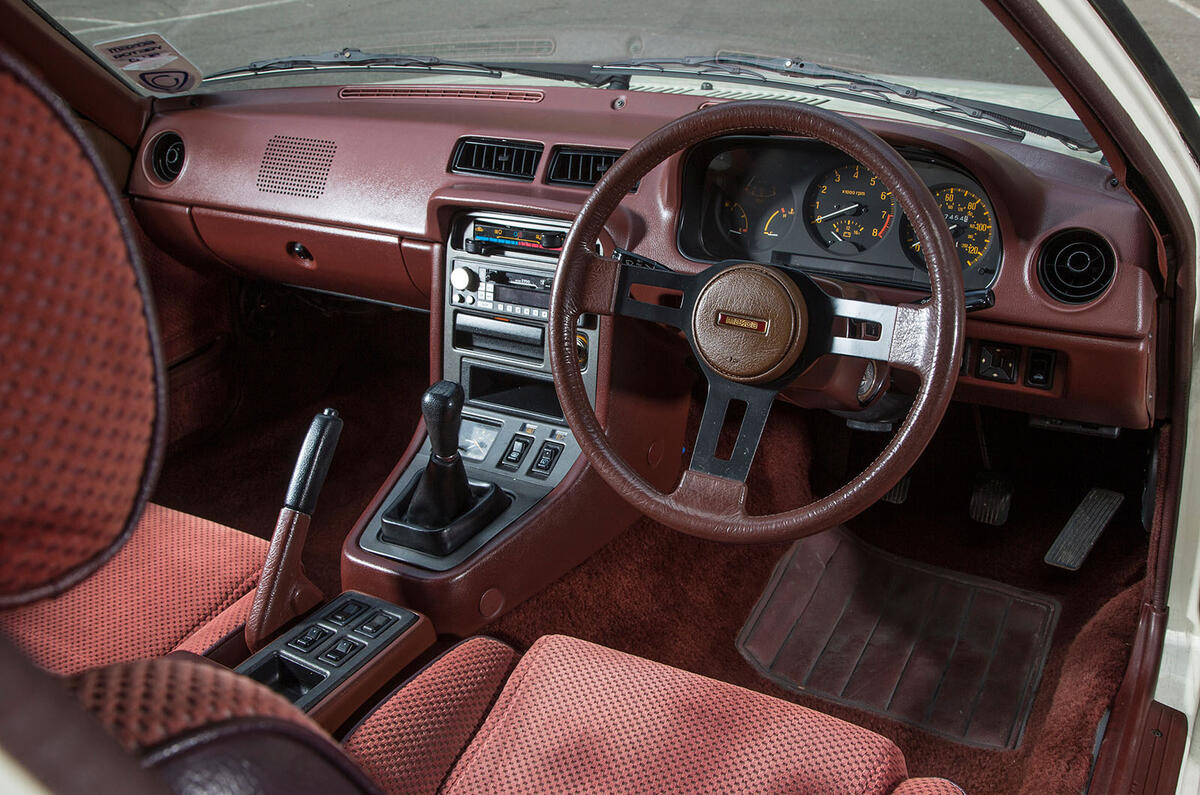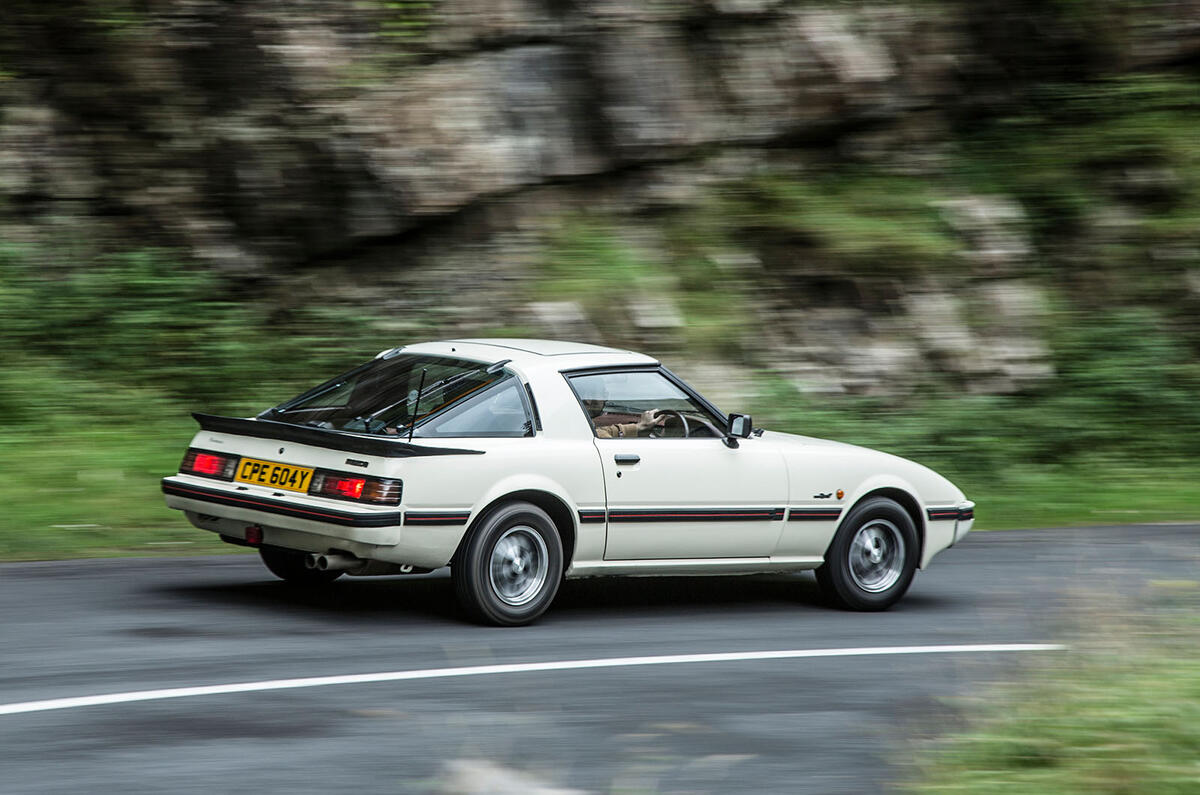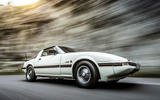If we had a pound for every time we had cause to write that Mazda was going to bring a new, rotary-engined sports car into production, we’d have, well, about six or seven quid.
It has now been so long since it had a rotary car in its range – since anyone had a rotary car in their range – that it’s worth reminding yourself what one is like.
We could have borrowed a recent car, perhaps an RX-8, but I like the purity of an earlier rotary. So we’ve opted to try the first of the RX-7s – or near to it. This is a late first-generation car, so post mid-life upgrades, but an original RX-7 in the scheme of things.

Mechanically, it’s sound and, er, it’s ‘honest’ of body – brushed touch-ups here and there, but straight and solid. And cute. It’s not as dinky as you’d think for a car from 1983. It sold well in the US and they don’t do tiny cars, so at nearly 4.3 metres long it’s a touch longer even than today’s Toyota GT86. Like the Toyota, it’s a 2+2 (although American cars were two-seaters, hence the rear chairs are pretty hopeless), but the Mazda is much narrower than a car of today, at only 1675mm wide.
That much is obvious when you slip inside the carpeted, veloured interior, whose colour and finish tell you quite a lot about when this car was built. Driver and passenger are seated fairly close, but it’s the proximity of the exterior and the glass area that show the car’s age – that make you think you probably don’t want to have an accident in it.
The A-pillars are tiny, so visibility forwards is exceptional, as it is to the rear. The big glass rear hatch means that the entire rear-view mirror, bar a tiny amount of head-restraint intrusion at each corner, is given over to the view behind. No modern car gives you such a good outlook.




















































Join the debate
Add your comment
I have now owned 3 RX7s
The car pictured above is almost exactly like my first RX7 right down to the red pinstripe on the bumper; that was 1984. This car started my passion for the RX7. This model was the last of the series before they changed the shape and went to the FC.I had the opportunity to start a business in the USA in 88 and had to sell my 7.I paid 24,500 aud new in late 1984 and got back 24,500 aud in 1988.I swore I would replace it once in the USA. The business took every cent we had and the first opportunity for me to get another was in 1996 and I bought an FD3..........OMG, I loved this twin turbo even more than the first.9/11 occurs and the world (especially the USA) changed: Corona Virus is the closest thing anyone will get to see how badly affected the USA was by 9/11.............we returned to Australia.I had to sell my FD before leaving Philadelphia but made a commitment to myself I would get another. They stopped making them in 2002. Finally, in 2015 I watched the auctions in Tokyo.I imported a secondhand 1994.If you can get your hands on one? Buy it! Don't listen to people talking about wear and tear; if you like it buy it.It is like any V8, treat it well and maintain it and the twin-turbo rotary will treat you well and you will see why so many of us feel driving this vehicle is not driving but an exercise in pure passion. Hopefully, my photo of REXY will attach.
The RX-7 was delightful car
The RX-7 was delightful car to drive, the petite styling an object lesson in minimalism, compared to most of today's clunkers.
But should Maxda pursue the rotary? I reckon the answer is only if they have cured previous issues like poor fuel consumption and rotor wear. Even then, a new-generation rotary needs to be cleaner and far more economical than any other ICE engine, preferably competing with EVs.
Mazda
Yeah, yeah...
Can we not enjoy a few minutes peace reading about how good the Mazda rotary engine was without another 'the world must do as I command' NOW lecture?'
Yeah, yeah...
Can we not enjoy a few minutes peace reading about how good the Mazda rotary engine was without another 'the world must do as I command' NOW lecture?'